During the period of 2016 to mid-2017, KTA initiated Ta-Li-Sn-Rb focussed, near-mine exploration work. A total of 64 rock-chips (16D001 to 038, AD001 to AD007, and 17D001 to 023) were collected over three field campaigns from pegmatites in the pit, mine dumps and from outcropping pegmatites south and southesat of the mine. Many samples were anomalous in the elements of interest, these are summarised in Table 1. Thirty-one samples returned >1000ppm Rb to a maximum of 7676.8ppm, 6 samples over 1000ppm Li to a maximum of 4289.4ppm Li, 11 samples over 100ppm Ta to a max. of 1518.58ppm. Two samples from the undrilled Southern Pegmatite swarm; AD004 returned >5000ppm Rb, 250ppm Sn and 348ppm Li.
Table 1: KTA anomalous rock-chip sample assays
| Sample | Li | Nb | Rb | Sn | Ta2O5 |
| ID | ppm | ppm | ppm | ppm | ppm |
| 16D001 | 614 | 62 | 4014 | 140 | 37 |
| 16D003 | 220 | 338 | 1232 | 39 | 328 |
| 16D004 | 322 | 43 | 1262 | 45 | 767 |
| 16D005 | 511 | 618 | 2459 | 74 | 418 |
| 16D012 | 2398 | 87 | 1324 | 219 | 75 |
| 16D013 | 94 | 289 | 283 | 10 | 181 |
| 16D014 | 554 | 100 | 2834 | 98 | 70 |
| 16D015 | 148 | 253 | 381 | 16 | 111 |
| 16D016 | 485 | 130 | 1696 | 52 | 1853 |
| 16D017 | 116 | 11 | 313 | 18 | 1202 |
| 16D030 | 4289 | 20 | 5842 | 136 | 9 |
| 16D032 | 2346 | 245 | 7677 | 209 | 226 |
| 16D037 | 1509 | 417 | 1553 | 101 | 77 |
| 17D018 | 527 | 64 | 2134 | 59 | 613 |
| 17D022 | 470 | 233 | 3464 | 136 | 90 |
| 17D023 | 1399 | 68 | 2441 | 90 | 15 |
| AD001 | 1940 | 85 | 3820 | 300 | 43 |
| AD004 | 348 | 180 | 5000 | 250 | 153 |
Based on promising rock-chip results an 11 vertical hole, RC program (DRC001 to 011) totalling 1,066 metres was completed in September 2017. The drilling was designed to:
- assess grade along strike of the mineralisation in the open pit where pegmatites are known to thicken;
- test areas where zinnwaldite and lepidolite were noted with anomalous Li, Rb, Nb and/or Ta geochemistry; and
- determine the distribution and tenor of rare-metal mineralisation within the pegmatites.
The holes were drilled as three lines and targeted the flat-dipping pegmatites immediately east and northeast of the open pit. The target areas were tested with three lines of holes. The southern line drilled shallow, flat-lying pegmatites adjacent to the southeast corner of the pit and tested for deeper underlying mineralisation. The central line of three holes targeted the line of mineralisation immediately north of the pit and a deeper, approximately 30-metre-thick pegmatite. The northern line tested the further strike extension to mineralisation and an eastward extension of a previously drilled thick pegmatite, along with some thinner ones. These holes were the deepest holes drilled so far at the project.
The drill program intersected more extensive pegmatite intersections and widely distributed multi-element rare metal mineralisation than was anticipated; highlighted by the discovery of a rubidium, tin and tantalum enriched 71 metre interval. The assays revealed evidence of Rubidium (Rb) enrichment in addition to confirming the existence of Tin (Sn), Tantalum (Ta), Lithium (Li), Cesium (Cs), and Niobium (Nb). One hundred and ninety-seven (56%) of the samples returned Rb values exceeding 1000ppm, with a peak value of 4943.3ppm (0.49%). Pegmatite samples were enriched in Lithium, but not to the same extent as Rubidium. Better Rb intersections are summarised in Table 2.
Table 2: summary of rubidium (Rb) RC drill intersections
| Hole ID | From (m) | To (m) | Width | Rb (ppm) |
| DRC001 | 92 | 105 | 13 | 1322 |
| DRC002 | 93 | 111 | 18 | 1997.3 |
| DRC003 | 66 | 137 | 71 | 1567.3 |
| inc | 66 | 83 | 17 | 1702 |
| inc | 87 | 98 | 11 | 2251.4 |
| DRC005 | 22 | 34 | 12 | 1859.7 |
| DRC008 | 57 | 90 | 33 | 1300.6 |
| inc | 60 | 77 | 17 | 1545.3 |
| DRC009 | 38 | 46 | 8 | 1658 |
| DRC010 | 29 | 45 | 16 | 1994 |
| DRC011 | 46 | 68 | 23 | 2093.3 |
| 92 | 108 | 16 | 1417.4 |
Figures: Drill sections with Rb geochemistry
ASX ANNOUNCEMENTS
- 16 June 2017 (Rock Chips)
- 14 August 2017 (Rock Chips)
- 31 October 2017 (Drill Results)





